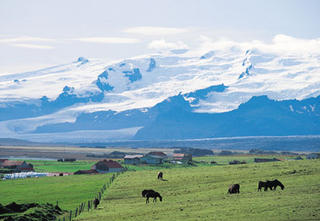




Zambia - South Luangwa National Park
I am at the Mfuwe lodge set in the middle of the South Luangwa national park in Zambia. There are no fences around the lodge. The chalet I am staying in is on a oxbow lagoon. Just outside there is a herd of ten elephants noisily splashing around. A small family of Warthogs are getting out of the way with three tiny babies scampering behind their parents, unaware that they could be squished by the elephants. A wild buffalo got stuck in the mud earlier and the herd abandoned it to die haplessly. The guides told us that hyenas and lions would set upon the easy prey later that night and we would have to deal with the rotten smell of a carcass. But then these are the rules of the jungle. A mother baboon and its baby have occupied my patio and are looking intently through the screen mesh at what I am doing, cocking their head curiously at the unfamiliar strains of Bob Dylan from my laptop wailing,
“Windows were shakin' all night in my dreams
Assorted clusters of grazing herbivores - Impalas, Zebras, Waterbucks, Kudus, Pukus, Vervet monkeys, and Baboons are walking the dry lagoon bed to the wet patch in the middle having a drink or grazing on the few patches of green. The only part of the lagoon that has deep water has been colonized by a large group of hippos who have marginalized the crocodiles to the edge of the water. The hippos seem to fear no one and grunt threateningly most of the day and night. The animals walk freely around the lodge between the chalets. A certain herd of elephants is particularly fond of the mangoes from the mango tree in the courtyard next to the bar. It is an astonishing sight to see wild elephants walk through the building, stopping at the reception, sniffing at the strange smells from the vodka bottles in the bar before heading off to the tree. The lodge staff escort me between my chalet and the main lodge which reminds me that this is the wild, these animals roam free, and I am caged in my room or in my safari jeep.
Yesterday evening I saw a herds of elephants gather in a very organized fashion on the edge of the Luangwa river where they meet up every night. Once the herd was about 160 strong they crossed the river in several groups led by a senior matriarch. Upon crossing to the other side they dispersed into their respective family units to wreak havoc on the villages outside the park and eat up the mangoes and other crops the Chewa, Bemba, and Kunda tribes grow. Patson, our guide, tells us that they show up at his village every night and it is a complete nuisance. In the morning they make the trip back. They collect as a large group at a crossing point, make the crossing and then disperse again. Their social organization and intelligence demonstrated through this daily behavior is astonishing.
All this is a remarkable sight for a city dweller. To understand how to deal with wild animals if I encounter one on my way to grab dinner at the restaurant I refer my Lonely Planet guide to Southern Africa and it has this advice among much other useful information, "If a Rhino charges and you cant immediately climb a tree, then face the charge and step to one side at the last moment in bullfight style." The other guests in the lodge include a mining rights lawyer from Canada, a health care accountant from Belgium, and Brazilian couple who work in the Zambian copper mining industry. I spend the afternoon running little video clips in my head of Rhinos charging and how each one of them would do the clever sidestep maneuver as perfectly as the Lonely Planet guide suggests.








